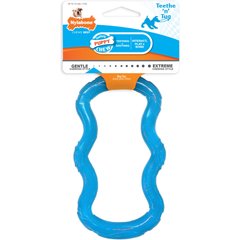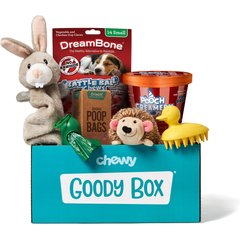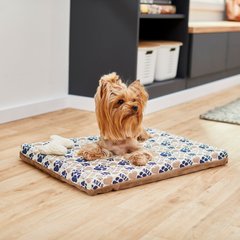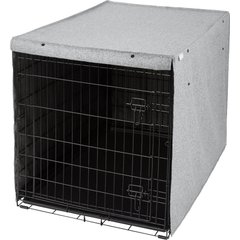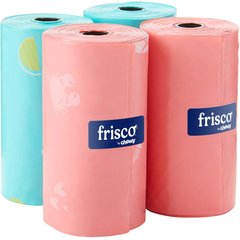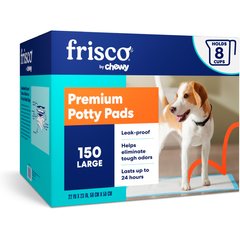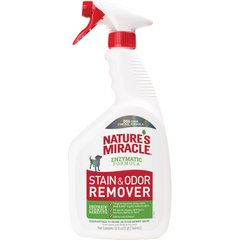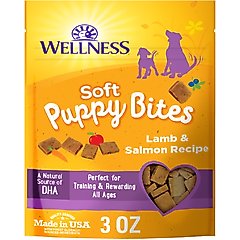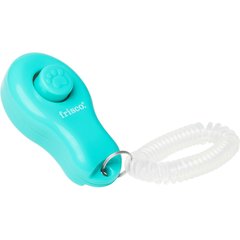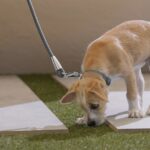Puppy Training 101: Your Guide to Mastering Basic Puppy Training

Photo by Melanie DeFazio / Stocksy United
You just brought home a new puppy. What an exciting time!
There’s so much to teach your new best friend, and while puppy training might seem a little overwhelming at first (hello, potty training!), the good news is you have an eager student at the end of the leash. Puppies are ready and willing to start learning good manners as soon as you bring them home, so the best time to start training puppy obedience is now.
It’s important to note that all of your interactions with your puppy are potential lessons; everything from the way you greet them (are you allowing them to jump up on your legs?) to how you walk them on leash (are you following while they drag you along?) will teach your puppy what is and isn’t acceptable behavior.
Ready to get started? Our guide will walk you through everything you need to know about basic puppy training.
The Best Way to Train a Puppy
Pups as young as 8 weeks old have the capacity to learn the basics, but remember: The younger the pup, the shorter the attention span. Puppy training lessons should be short, fun and supplemented with many opportunities for play.
The best way to train a puppy is to conduct lessons when they are well-rested. Make sure they are ready to go but not too excited, as it might be tougher for them to focus. Before you begin, take your pup outside for a potty trip, and make sure to take them out right after you finish as well.
You’ll need a pocket full of high-value puppy treats. Puppy training requires lots of rewards, so opt for something like Wellness Soft Puppy Bites, which are small but also tasty enough to keep your puppy engaged in the training game.
Basic training lessons should take place in a familiar, distraction-free environment. You and your puppy will eventually transition to working outside and in new spaces, but the training initial stages should be happening in a low-key spot so that it’s easy for your pup to focus on you.
It’s also helpful to have a few puppy toys ready to go so you and your puppy can take play breaks. A tug toy or ball for fetching are great options that allow your dog to burn through some puppy excitement before it’s time to focus again. If you’re looking for a budget friendly bundle with both treats and toys, a Puppy Goody Box is a great way to get all the basics.
Puppy Training Tips for Success
- Make sure your puppy is well-rested and not too revved up.
- Take a potty break before starting.
- Come prepared with lots of yummy treats.
- Find a familiar, quiet place to practice.
- Keep lessons short and sweet.
Recommended Products
Puppy Training Milestones by Age
Eight to Ten Weeks
Congrats—you probably just welcomed your new puppy into their forever home! Your primary puppy training tips at this stage center around helping them acclimate to a new environment and starting them off on the right paw when it comes to manners. Your guide to puppy training begins with the following steps:
- Set up a daily schedule: Dogs thrive when they know what happens next, so map out a schedule that includes your pup’s meals, potty trips, play times, training lessons, naps times in the crate and end of day wind down. (It might help to keep notes!)
- Focus on crate and potty training: Remember, when you teach your dog crate training you’re also working on house training at the same time. Your most important goals at this stage are helping your pup learn that the crate is a happy place, and that they get paid with a small treat immediately after they potty outside. (We’ll get you started with guides to crate and potty training below!)
- Begin socialization: A well-socialized dog is a happy and confident dog, so enroll your pup in a an accredited class and work on those social skills in a controlled environment.
- Work on alone time: While it’s tempting to spend every second with your puppy, it’s important that they learn how to be comfortable when left alone. Once your puppy is confident and happy in their crate thanks to your introductory crate training, practice brief departures (this should be no more than 3-4 hours for puppies 6 months or younger), either leaving your home entirely or just moving to another room so you are out of your puppy’s sight.
- Introduce the leash: Your puppy is going to have a lifelong relationship with a dog leash, so get them acclimated to the sensation of wearing it before going for walks. Clip on a light leash and let them drag it through the house, then get them used to walking on it without pulling. The goal is to always have a gentle curve in the leash.
- Teach “sit”: One of the earliest obedience training lesson for a puppy to master is the basic “sit” cue. Begin by teaching it in a low-distraction environment, then work on it in a variety of locations. This lesson is the first step in learning impulse control since you can ask your pup to “sit” before giving them things they want, like their food bowl or a toy. Find out how to teach this essential skill below.
Ten to Twelve Weeks
- Socialization: Continue your pup’s exposure to the world by welcoming new friends into your home to meet them and taking them on brief outings in areas where dogs typically aren’t found, like the bank or dry cleaner (if dogs are allowed). Don’t forget to bring treats with you!
- Mouthing and chew toys: At this stage your puppy will want to put their mouth (and sharp teeth!) on everything, so help them focus on appropriate chewing outlets other than your skin. Provide your puppy with a variety of heavy duty treat-stuffable toys like the KONG Puppy dog toy. (Plush toys aren’t appropriate for teething toys.) You should also help your puppy inhibit the force of their bite by using the “ouch” technique when they chomp on you. Find out more about training a puppy not to bite.
- Body handling: You’ll have to perform a variety of caretaking procedures on your dog throughout their life so it’s vital that they are comfortable with all sorts of handling. (Your vet will thank you too!) In short, during individual sessions pair treats with gentle handling to help your dog feel comfortable with manipulation of their ears, mouth, paws and tail. Once your puppy is okay with handling, begin introducing the tools you’ll need to use, like a toothbrush, nail clippers and a comb.
- Alone Time: Continue your pup’s alone-time training by leaving your house or removing yourself to another room out of your dog’s eyesight for longer periods of time (again, no more than 3-4 hours at this age). Give your dog a treat-stuffed busy toy to keep them happily occupied while on their own in the crate.
- “Say please” training: One of the best training tips for puppies is teaching them to say “please” when they wants something. This simple foundation-level impulse control lesson can be used throughout your dog’s life. All you have to do is ask your puppy to sit when they want something, like access to outdoors or a toy.
- Basic commands: Begin working on training cues like coming when called, down and brief stays with positive reinforcement training. Keep your puppy’s lessons short and upbeat so they remain interested in their lessons.
Three to Four Months
- Post-vaccine socialization: Once your puppy has completed their vaccination series, you can begin taking them to more populated locations. As always, make sure that your puppy sets the pace for exploration and meeting new friends, and don’t force them into scenarios where they seem uncomfortable. (Your puppy is still too young and impressionable to visit the neighborhood dog park at this stage.)
- Leash training: Your pup is starting to get bigger and stronger at this point so continue to focus on polite leash walking. Unless you plan to show your dog in competitions, they don’t need to learn to walk in perfect heel position—it’s an unnatural behavior that doesn’t allow them to explore the environment. But on the flipside, your puppy shouldn’t be allowed to pull while on leash. Learn how to leash train your puppy here. And to help you keep up a consistent walking schedule, download our Puppy Walking Schedule printable.
- Build on training behaviors: Introduce your foundation training behaviors in new and more distracting environments. Work on recall (aka coming when called) outside and increase the duration of time your puppy can obey the stay cue.
- Find a dog trainer: At this stage, your puppy will likely have finished up with puppy socialization classes, so look for a positive reinforcement trainer to continue refining the lessons learned in puppy class and at home with you.
Four to Six Months
- Leash manners: Continue refining your puppy’s leash manners in a variety of public spaces so that they know how to walk politely no matter the environment or level of distractions.
- Continuing education: Your puppy might have finished their basic training course at this point but that doesn’t mean training is done! Continue working on the behavior you learned in class together every day, and consider signing up for advanced training, such as the heel command.
- Don’t forget the treats: Your dog will probably have a good grasp of basic training behaviors but that doesn’t mean you should get rid of the treats! You should reward your puppy for a job well done as they grow, but you can also start incorporating alternate rewards like play.
Crate Training a Puppy
Teaching your puppy to love their crate is one of the most important early lessons they’ll learn in their new home. Dog crates tap into canine denning instincts (aka their urge to seek out cave-like spaces), and since dogs rarely soil where they sleep, the crate will help speed the potty training process.
1. Set up your dog crate properly.
- Choosing the right dog crate for your puppy is critical.
- The size should be big enough so that your puppy can stand up, turn around and lie down comfortably but not so big that they can potty in one corner and sleep in the other.
- Keep the crate in a common room in your house, not the basement or garage, so your puppy doesn’t view going into the crate as banishment.
2. Use puppy treats.
- To begin crate training your puppy, introduce the crate by leaving the door open and putting treats inside for your puppy to discover.
- Let your dog examine the crate without shutting the door and give them a few more treats for remaining inside.
- Continue this introductory process in a few short sessions until your puppy goes into their crate without hesitating.
3. Feed meals in the dog crate.
Once your puppy is happily going into the crate, begin to feed meals inside of it. Close the door while your puppy eats, then wait a few minutes after they finish before you open the door. (Don’t forget to take them right outside for a potty break!)
4. Try interactive dog toys.
- Another way to speed the acclimation process is to leave the crate door open and use a sturdy rope that your puppy can’t destroy to tie a puppy-safe interactive toys inside the crate.
- Giving your pup a treat-stuffed activity toy like the KONG Puppy Toy inside will help your dog learn that good things happen in the crate!
- Over time, work up to giving your puppy a busy toy in the crate and shutting the door for 15 minutes.
- Stay close to where your dog is crated initially, but gradually work up to leaving your dog alone while they’re crated.
- Gradually add more duration to your dog’s crated periods until they’re happy to hang out inside while you’re not around.
5. Don’t over-crate.
- Remember that over-crating your puppy can backfire and cause your puppy to soil it, which will derail your progress.
- You can calculate your puppy’s safe “hold time” by translating their age in months to hours; this means that a 10-week old puppy can be crated for roughly two hours and possibly a little longer at night.
Need more crate training tips? Take a look at our complete guide for crate training puppies here.
Recommended Products
How to Potty Train a Puppy
The first thing most puppy parents want their new pup to learn is where to potty. And while the crate is an invaluable tool for the potty training process, there’s more to it! Helping your dog learn to potty outside requires supervision, good timing and patience.
Maintain a routine.
- It helps to keep your puppy on a daily schedule that includes mealtimes, potty trips, playtime and crating.
- Dogs crave predictability, so sticking to a schedule that includes everything from meals to play sessions will help your puppy anticipate what happens next.
- Your pup’s daily schedule should include potty trips outside about 10–15 minutes after meals, potty trips after play sessions (and for young pups, during play sessions), after meeting new friends, after waking from a nap, and before and after crating.
Supervision is key during potty training.
- Accidents can happen when pups wander around the house unattended, so plan to crate your puppy when you can’t watch them and use pet gates when you hang out together inside.
- You can slowly begin to give your puppy more household access once they’re regularly alerting you when they need to go out and they’ve been accident-free for at least a month.
- (Keep in mind that it can take your dog up to six months to be fully housetrained.)
Understand your puppy’s body language
- An important but often overlooked step in the potty training process is learning your pup’s early “gotta go” signals.
- By the time your puppy is circling and sniffing—a sign most pet parents recognize as a potty indicator—it’s probably too late to get your pup outside before an accident happens.
- Every puppy will have body language that indicates the need to go before it gets critical, like trying to leave the room and acting distracted.
Picking up on those cues will allow you to get your pup outside well before it’s go-time.
Use treats and triggers.
- Once outside with your pup, take them to a familiar location and wait for them to find the perfect potty spot.
- When they’re finished, immediately follow up with a small treat (don’t wait until you’re back inside!) and praise them for a job well done.
- You can also teach your puppy a potty phrase that will eventually act as a potty “trigger;” simply say something like “hurry up” as your puppy eliminates.
With enough repetitions your puppy will associate the phrase with the act of eliminating, which can help you cue them during inclement weather.
Never punish your puppy.
- Finally, remember that accidents happen.
- Never punish your puppy for making a mistake in the house, as it doesn’t teach your puppy what they should do and can damage your growing bond. Instead, try to interrupt your pup and get them outside to finish the job.
- If it’s too late, use a good odor eliminator and vow to be a better supervisor in the future!
If you’re on a time crunch, check out our tips for potty training a dog in just seven days.
Recommended Products
How to Train a Puppy to Sit
Teaching your puppy to sit is a great way to begin formal puppy training because it’s useful in many situations, plus it’s simple to master!
Use treats and repeat often.
- To start the process, hold a small treat like Zukes Puppy Naturals right at your puppy’s nose level and slowly move it back between your puppy’s eyes and over your pup’s forehead.
- As the treat travels up and over, your pup’s heard will rise up to follow it and their rump will go down.
- The minute their rump hits the ground, mark the action by saying “yup!” or “good!” and then give your puppy the treat.
- If your puppy opts to jump up rather than sit it’s likely you’re holding the treat too high, so try to keep it anchored to their nose so that it’s easy for them to reach with all four paws planted on the ground.
Repeat this process a few times until your puppy is quickly moving into position.
Remove the reward.
- The key to a perfect “sit” is getting your puppy to do it without using a treat to lure them into position.
- After a few successful repetitions, just stand still and wait for your puppy to offer you a sit. It might take a few seconds, but because your pup has had several successful repetitions of getting rewarded for sitting, it’s likely they’ll move into position without needing a hint from you.
- As your pup starts to move into position say “sit” (you’re attaching the word to the behavior), then mark it with a “yup” and give them the treat. It usually takes pups about 15 to 20 repetitions before they associate the word with the behavior, at which point you can begin to ask for the position by saying the word “sit.”
- Simply say “sit” and give your pup a few seconds to process (try not to repeat the word!), then give them a goody when they do it!
Practice sitting in a variety of environments and with different types of distractions to master the command.
Want to learn more about teaching this command? Learn everything you need to know about training “sit” here.
Recommended Products
Teaching Your Puppy to Come When Called
It’s easy to teach your puppy the foundation of a lifelong recall, and it’s fun too! This training cue is one of the most important lessons your puppy can learn since coming when called can help keep them safe. All you need to teach it is a pocket full of small, soft treats, a helper, a low-distraction environment and an eager student.
Choose a recall word.
- Select a word other than your puppy’s name since you probably say it often, and it won’t have the impact you’re hoping for.
- A word like “come” or “here” works great.
- Get down on the ground across the room from your helper and call your dog to you by saying your recall word once in an upbeat tone, then follow up with some encouraging clapping or kissy noises.
- The moment your dog gets to you give them a small treat and lots of praise.
- Take turns calling your puppy with your partner back and forth, always giving them a treat and praise for running to you.
- End the lesson on a positive note.
Practice and reward.
- In the next session, set up the game so that you and your helper are in different rooms.
- Call your puppy to you but remember that you might have to whistle or clap more so that they can find you.
- Give them a treat when they gets to you, and have your helper call them back.
- Continue practicing the game throughout your home, then once your puppy is a pro at the recall game, move the practice outside to a safe, familiar environment.
Want to learn more about teaching this command? Learn everything you need to know about training “come” here.
Frequently Asked Questions
When to start puppy training?
Pet parents wondering when to start puppy training should understand that puppies at least 8 weeks old are capable of learning right away, so the best time to start is now! Puppies as young as eight weeks old can begin working on good behavior training right away, like greeting people without jumping up and basic manners like “sit” and “come.”
Are puppy training classes worth it?
When considering if puppy training classes are worth it, think about how helpful it would be to have an expert on your side as you navigate pet parenthood. There’s so much to learn, so the answer is yes, they’re worth it! The best ways to train a puppy are positive reinforcement classes that use treats and tons of fun to teach the basics.
Do puppy training pads work?
Pet parents wondering if puppy training pads work should consider where they eventually want their puppy to potty. Most people want their puppy to go outside, so using a training pad can add an extra unnecessary step to the process. Pet parents who can’t reach the outdoors quickly, like those who live in a high rise or have mobility issues, might need potty pads, but they’re not a necessary part of every new puppy’s shopping list.
Does puppy potty training spray work?
Pet parents considering if potty training spray works might be surprised to learn they don’t actually need it for successful potty training. You can achieve the same result by training your puppy to go to the same areas where they’ve pottied before. And remember, rewarding your puppy with a small treat after they finish going will help encourage them to continue pottying in the proper location.

